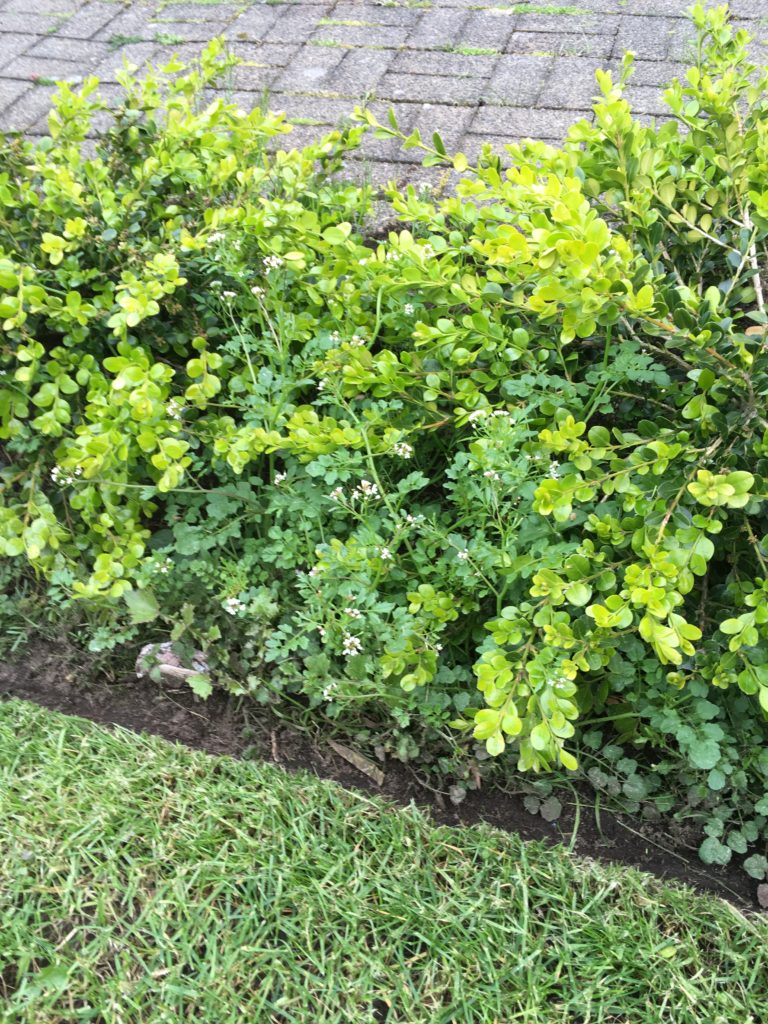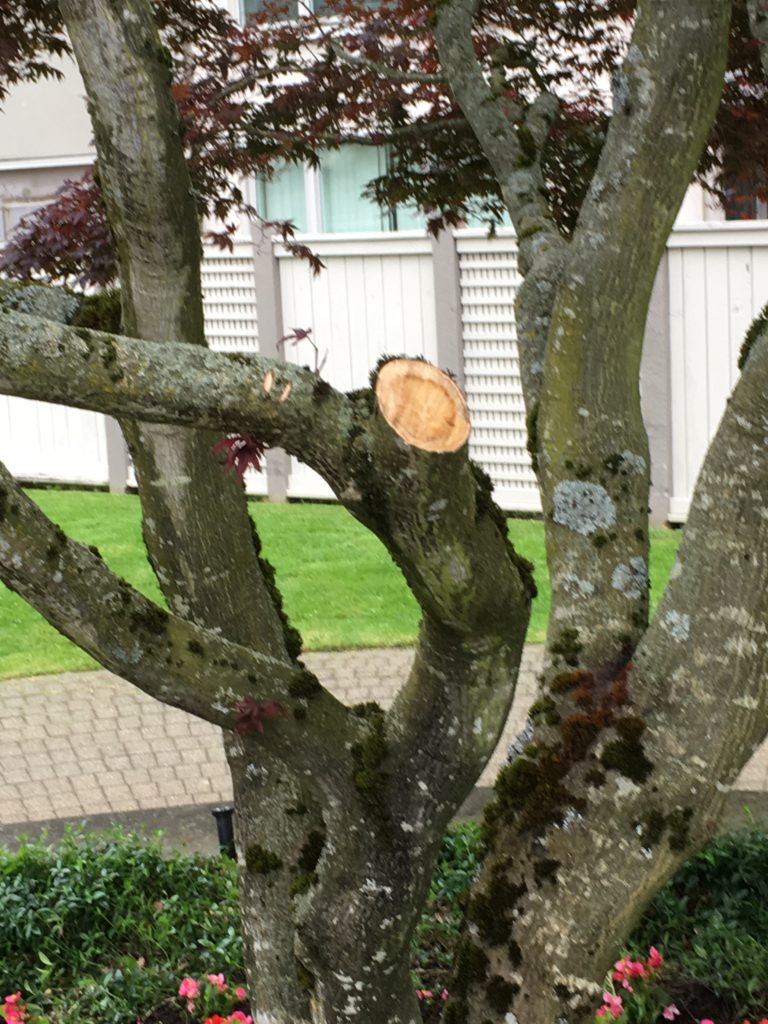Task timing is important in landscape maintenance and two recent incidents reminded of this. If you get it right in the private sector you can make profits; if you don’t, you could fall behind.
At the municipal level it’s much less stressful because municipal park operations start every year with a set budget. And they just have to stick to it without too many taxpayer complaints. This is why municipal jobs are so coveted: the pay is decent and stress levels are low.
Logging in April
I was helping at a site recently and noticed large snapweeds (Cardamine oligosperma) thriving inside boxwood (Buxus) hedges. The size of the weeds was alarming so, naturally, I assumed that the foreman in charge would join me in correcting the problem. Especially after I alerted him. Wrong! Weeding isn’t sexy. Workers almost always prefer machines to softer work.

Then I heard the roar of a chainsaw as the foreman took out two decent-sized dead branches. So what’s wrong with that?
The timing is horrible. Yes, all dead, damaged or diseased limbs on trees should be removed; but it’s best to do this in winter when the tree is dormant and weeds aren’t actively growing. Snapweed is an early spring plant and it produces lots of weeds.
Clearly, logging in April is bad when you have weeds everywhere.
Logging also takes time because you have to get your chainsaw ready and put on your protective equipment. Then there is clean-up.
Now, correct task timing comes with experience as the seasons pile on. I won’t write about a foreman avoiding the unpleasant task of weeding but I will think it. Considering the site weeds, two dead tree branches could have waited for one more week. After all, they don’t produce seeds.

Laurel duplication
Now consider early season laurel (Prunus laurocerasus ‘Otto Luyken‘) pruning. In this case the seasonal timing is OK. I think some of the deciduous shrubs could have been hit first but the laurels had some growth on them.
The mistake here is re-doing the same laurel hedges from last week! The foreman’s announcement mildly shocked me. Of course, it can happen where one week later you need to make some corrections. But re-doing entire hedges is totally unappetizing. Plus, cleaning up twice is a horrific duplication.
Here’s how you do it.
Do it well the first time. Before you move on or start cleaning, make sure you’re happy with your work.
Or, scan your work one week later, realize it’s not your best work, and move on to other hedges. Sometimes you have to let go, especially on large sites full of shrubs. You can’t afford to re-do every hedge and do clean-ups twice.
Conclusion
Let’s review. Knowing how to do a task is important but so is the timing. Take care of your trees in winter when they’re dormant and work is relatively slow. Not when your site is screaming with weeds.
When you finish pruning, check your work and make sure you’re happy. Re-doing the pruning and cleaning up twice is a duplication you can’t really afford.
Both of these examples serve as lessons for the foremen. There will be problems and mistakes, you just have to move on and learn from them.

